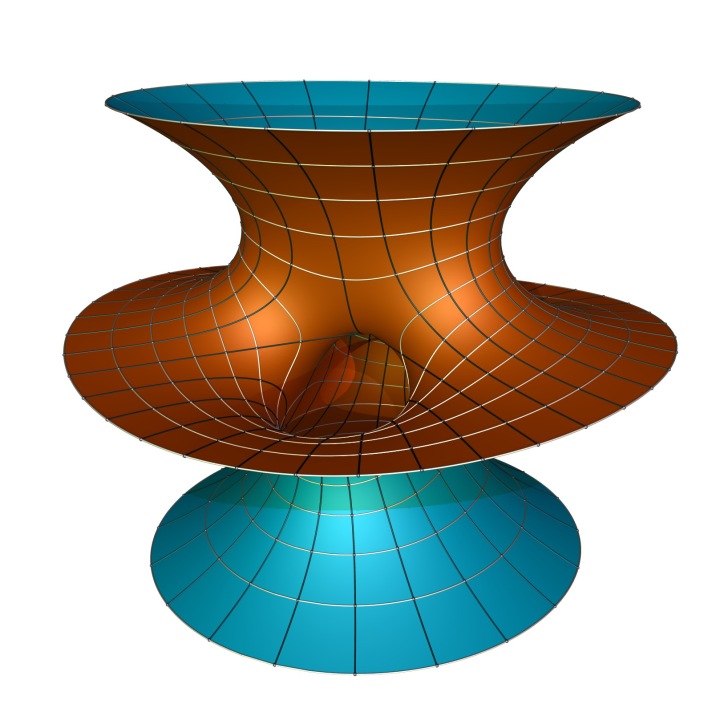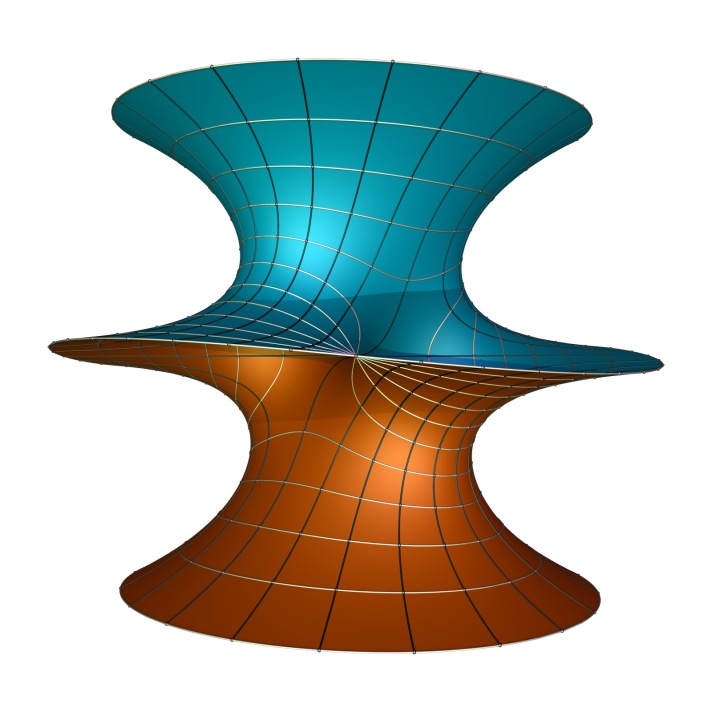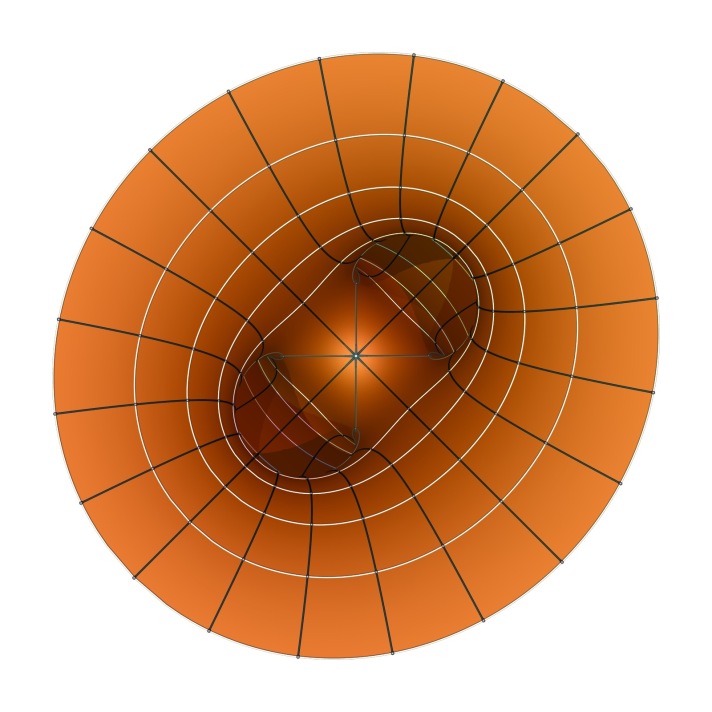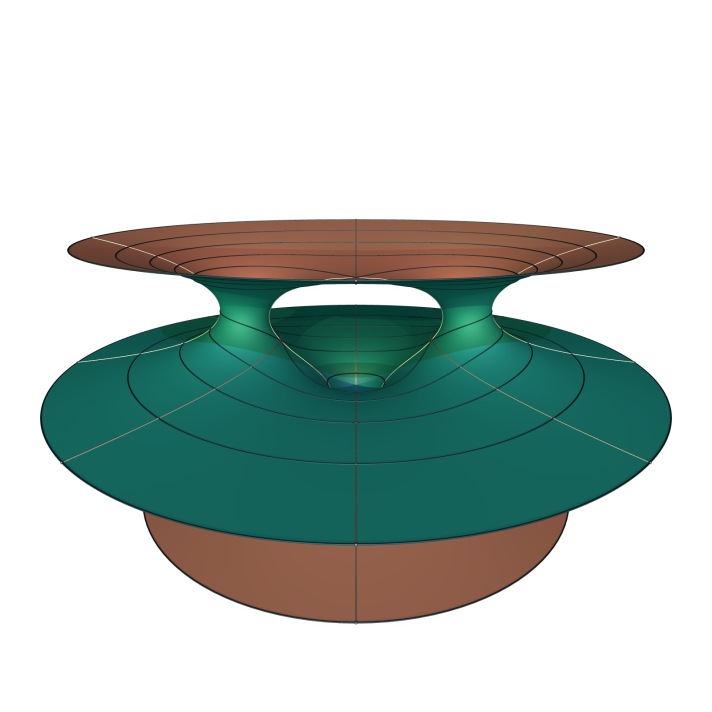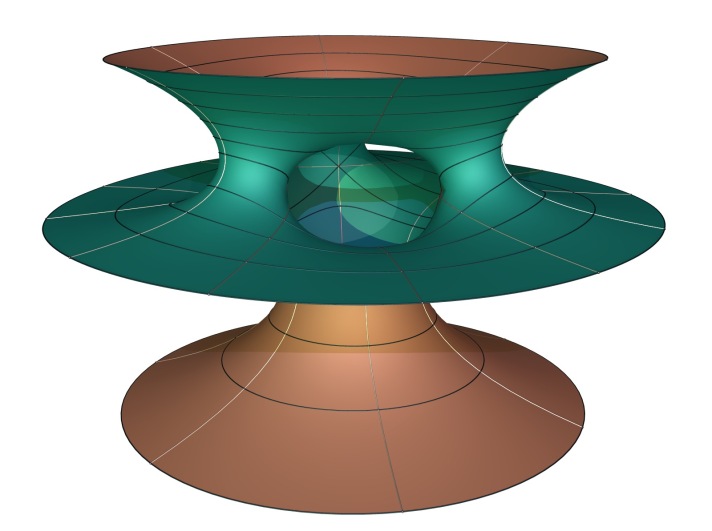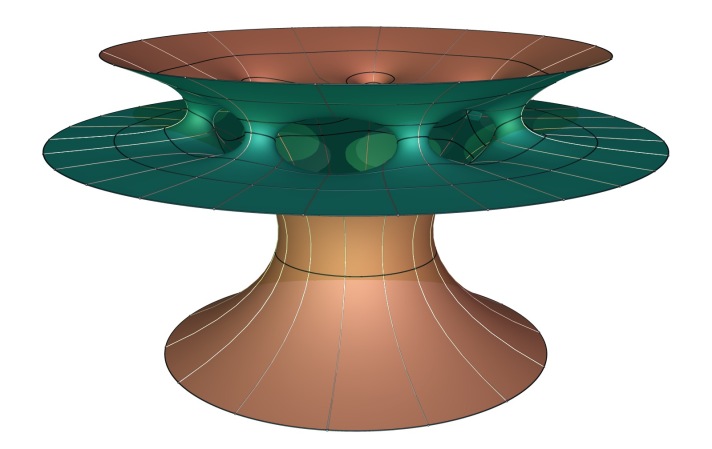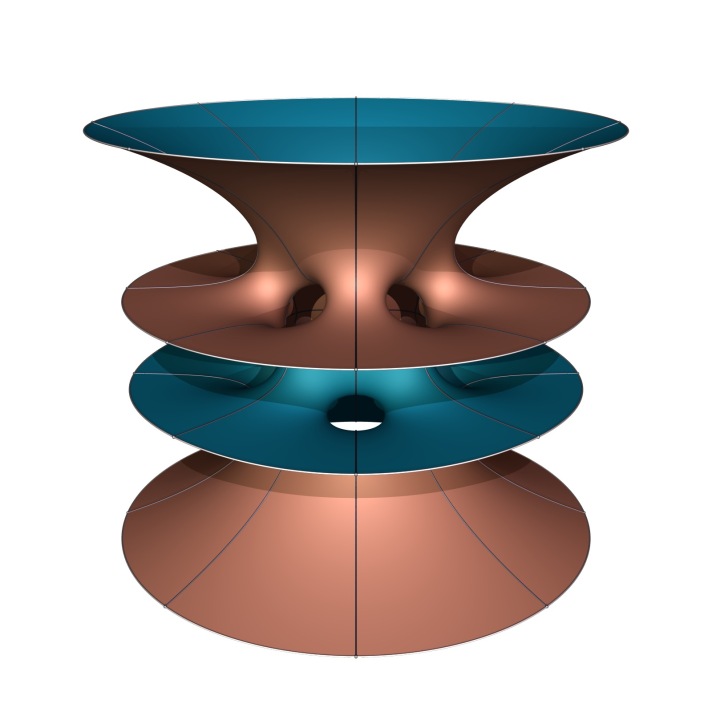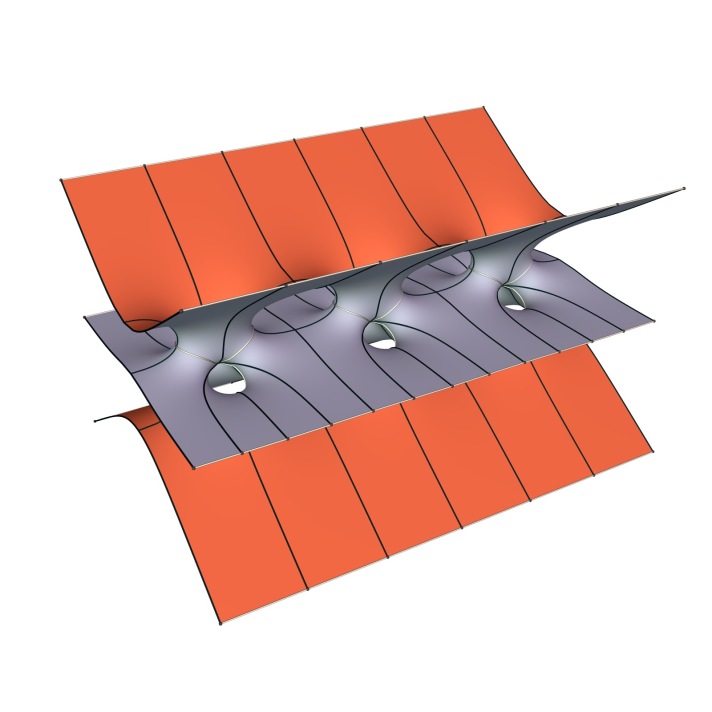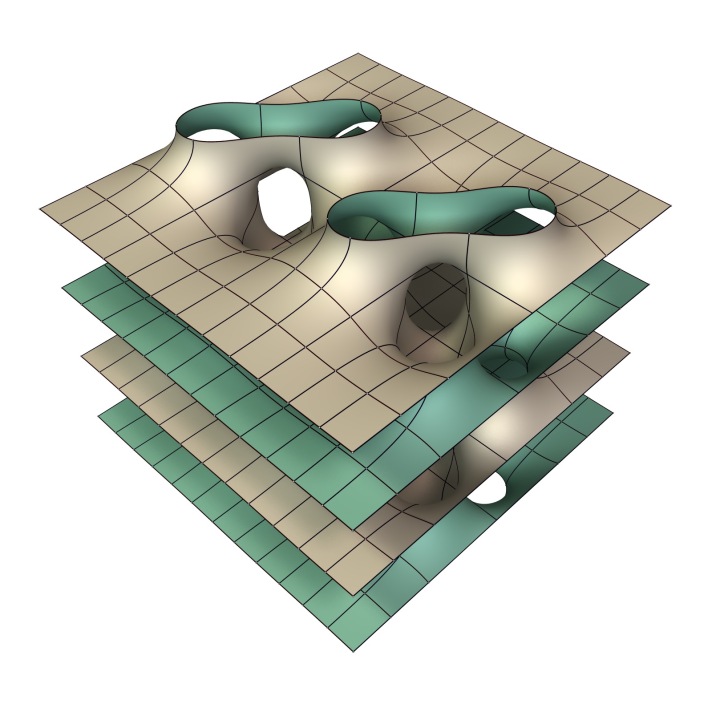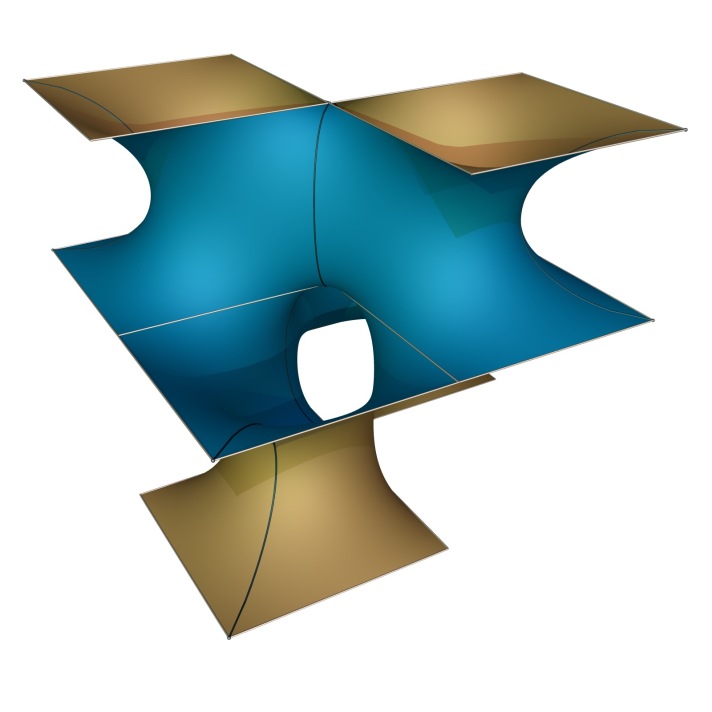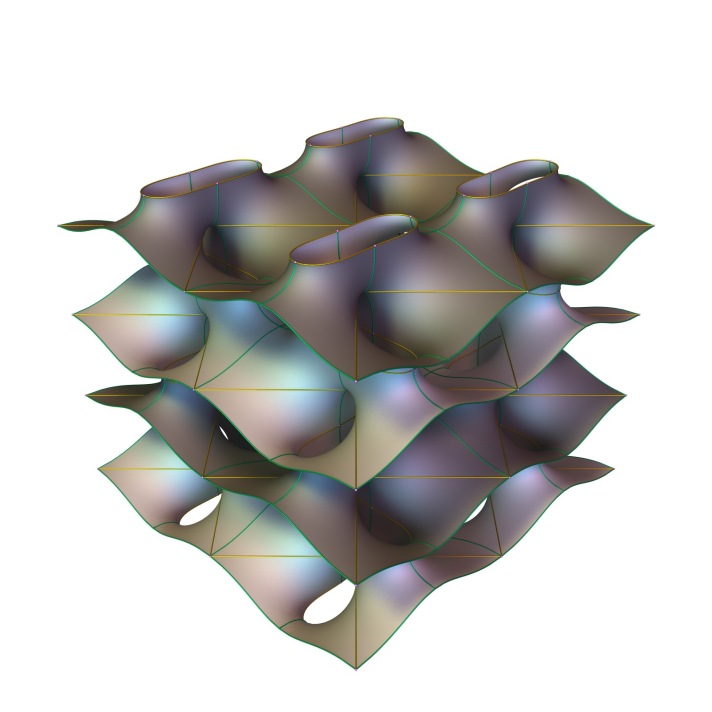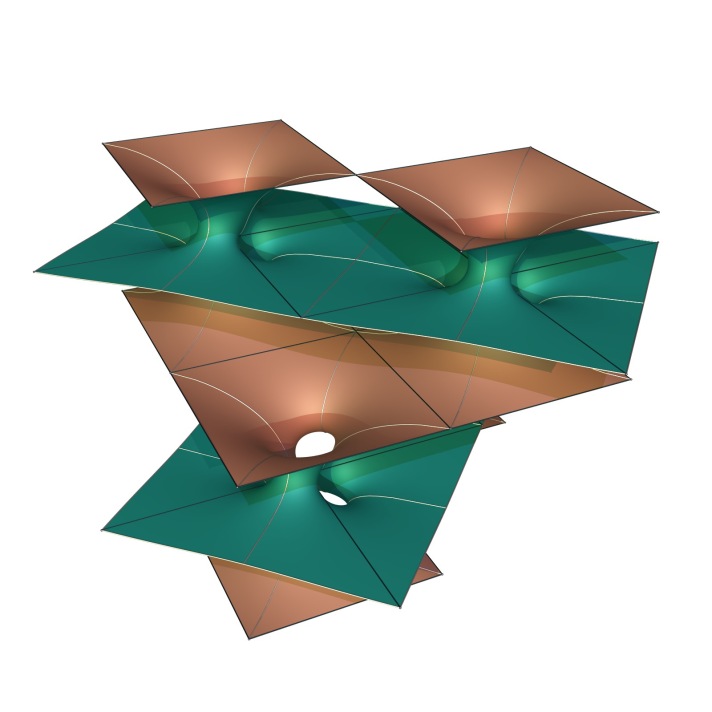In his 1982 PhD thesis, Celso José da Costa wrote down the Enneper-Weierstraß representation of a complete minimal torus with two catenoidal and one planar ends, all with limiting vertical normals.
I do not know whether Costa had any hope or even opinion that his surface might be embedded, but this is what David Hoffman and William Meeks realized and proved in 1985. It was the first complete, embedded minimal surface of finite topology after 1776 when Meusnier had proved that the helicoid is minimal. This breakthrough has spawned a vast number of new examples and triggered ongoing research.
David Hoffman and William Meeks found more symmetric examples of higher genus and were also able to deform the middle planar end into a catenoidal end.
Putting the new surfaces under some regime of classification has proven difficult. Costa’s proof that 3-ended embedded minimal tori belong to the Costa-Hoffman-Meeks family is all but transparent, and the question whether there are other embedded minimal tori of finite total curvature is still open. Examples with more ends seem to require also more handles, like Meinhard Wohlgemuth’s examples.
Then there are periodic examples that utilizes Costa saddles as building blocks, like the singly periodic Callahan-Hoffman-Meeks surface and the singly periodic Costa-Scherk surface below to the right that is different but possibly related to the Batista-Martín surface (of which I haven’t made a picture yet).
Below are two doubly periodic surfaces where the Costa saddles are rotated by 45º. The left one is the Lübeck-Batista surface, the right one a doubly periodic Callahan-Hoffman-Meeks surface with reflectional symmetries and without straight lines. Can one rotate a Costa saddle continuously by 360º in any such configuration?
Finally, there are several triply periodic Costa surfaces. The left is Alan Schoen’s I6 surface from around 1970, found through soap film experiments, and predating the Costa surface by over 10 years. The middle one is Batista’s surface, and the right one a new example of genus 4 that actually has the Costa surface as a limit, and not the Callahan-Hoffman-Meeks surfaces.
All this is only a beginning. Laurent Hauswirth and Frank Pacard have smuggled a Costa saddle into Riemann’s minimal surface, making it a genus one surface with infinitely many ends. Laurent Hauswirth has also used Costa saddles to construct families of singly periodic surfaces with annular ends.
